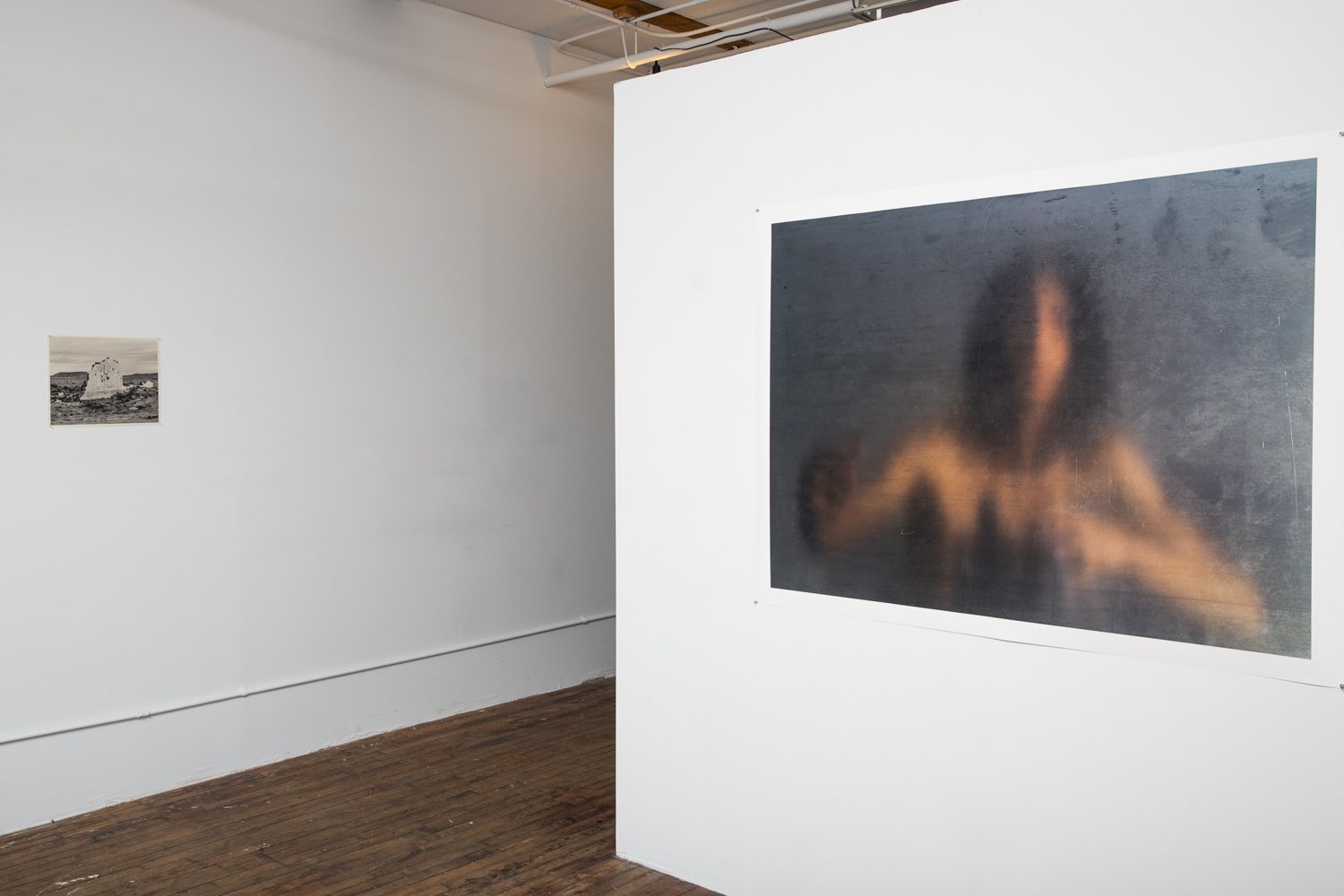The Buried Line
Galit Aloni, Maximiliano Cervantes, Alan Huck
December 9, 2023 - January 22, 2024
ARTIST BIOS
Galit Aloni (b. 1983) works with photography and installation as a performative tool to re-define the formation of opposed or divided landscapes, offering an alternative optical system of the observed as a parallax shift. Galit recently won the Tuttle Award as a MFA Photography candidate at the School of the Art Institute of Chicago. Formerly from Israel, Galit is dedicated to posing resistance and critiquing power structures through splitting the gaze and questioning how the eye is trained to see, while questioning photography’s documentary conventions. She examines representations of landscapes between the familiar place and the loss of its orientation through repositions and contradictions. Website / Instagram
Maximiliano Cervantes (b.1999, Borderlands, Texas) lives and works in Chicago. Cervantes received his Bachelor of Fine Arts degree from The School of The Art Institute of Chicago in 2021 and is a current MFA candidate at Northwestern University in Art, Theory, and Practice. Website / Instagram
Alan Huck (b. 1990) is a photographer, writer, and educator currently based in Chicago. His first book, I walk toward the sun which is always going down, was published by MACK and shortlisted for the 2020 Rencontres d’Arles Photo-Text Book Award. He currently serves as a mentor in the Image Threads Collective mentorship program and teaches various interdisciplinary photography workshops through the Penumbra Foundation. A Narrow Foothold, a collaborative artist book with the German photographer Jonas Feige, will be published by Another Earth in Spring 2024. Website / Instagram
CURATORIAL STATEMENT - KAT BAWDEN
In the film Cave of Forgotten Dreams, Werner Herzog documents the Chauvet caves, home to some of the oldest cave paintings ever discovered. In one scene, Herzog interviews Julian Monay, one of the French scientists on the Chauvet research team. Monay confesses to being deeply affected by the cave paintings - so much, in fact, that he briefly took a leave of absence from his job. "I am a scientist," he says to Herzog, "but also a human being." The caves overtook his mind, infiltrated his dreams, he said. He had nightmares about the lions painted on its walls.
Research is the immersion of oneself into questions, searching for knowledge that is hypothesized but not yet understood, observed but not yet known. In the work of Galit Aloni, Maximiliano Cervantes, and Alan Huck, I see three artists whose photography immerses themselves in questions about existential boundaries, the lines of which are buried in our minds, our systems of knowledge, our politics, and the unknowability of the future. These artists insert themselves physically into the terrain of their questions in such a way as to endanger themselves in the process, and disorient our own positionality as viewers.
Maximiliano Cervantes grew up in Texas near a factory that produced machinery used in both space exploration and war. In his work, I see the interplay of scientific research as both a search for transcendence, and a search for tools of consumption and domination over the earth and humanity. I see the confusion of these motivations, and the immersive nature of research and exploration that threatens to consume the researcher. In the search for knowledge, what is discovered, what is constructed, what is forced? And what will, wittingly or unwittingly, be eventually used against us?
As an Israeli, Galit Aloni is painfully familiar with the history and consequences of lines
drawn by geopolitical and imperialist aims. But what happens when those lines are known - and a matter of life and death - but made un-visible. How do we position ourselves, our politics, our morality? Aloni is not envisioning a utopia but rather revealing the parallel universe within our existing reality. Without the demarcations we are used to, we viewers are made confused and complicit, absorbed into this land and this conflict. The shutter becomes a metronome, and each frame brings us physically closer to a burning land. Who are we? And how have we reinforced this line that separates burnt from untouched? What does it mean to watch this fire, to photograph this destruction, to share it?
Alan Huck is somewhere between civilization and ruin. His images present an unanswerable mystery, a simmering entropic tension, a nowhere place halted in slow-motion destruction. It's unclear if we are seeing the physical remains from humans exactly as they were left. Or if we are witnessing some stage of digestion by the destructive self-equilibrizing force of the earth, like looking into the intestine of a dead animal to find another dead animal. We see the words SUNLIGHT and SKY and DARK CLOUD written on crumbling walls and don't know whether they were written as an observation or a plea. Is this parallel world within our world a hell or a utopia? Is this the place where we are all headed?
As I write this it is barely five in the afternoon and my windows are ink black. In this winter darkness, I have temporarily lost my orientation for my own world. My mind feels like a cave. I am nervous that if I spend too much more time thinking about and writing about these artists' worlds, I won't be able to reemerge into my own. Theirs are worlds you do not leave easily. If I'm not careful they will overtake my mind, infiltrate my dreams.





















